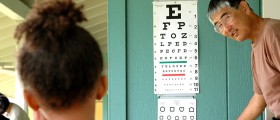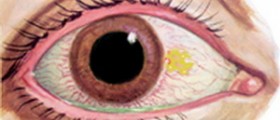
LASIK eye surgery is the most commonly performed refractive surgery procedure. Refractive surgery is the one that corrects visual impairment, with the objective of reducing or eliminating the need for glasses and contacts. Therefore, LASIK eye surgery is usually performed to correct myopia, hyperopia, and astigmatism. According to the official statistics, most of the patients are satisfied with LASIK surgery results, with satisfaction range being 92–98 percent. However, this procedure is occasionally associated with a number of complications, and people may even experience worsening of the eyesight following the surgery. This phenomenon, known as “regression” occurs rarely and usually over a couple of weeks.
LASIK procedure
LASIK is a surgical procedure used to reshape the cornea, the transparent front part of the eye that covers the iris, pupil, and anterior chamber. Cornea accounts for approximately two-thirds of the eye's total optical power and mostly contributes to eye’s focusing abilities. Reshaping of the cornea was first performed using the microkeratome, recision surgical instrument with an oscillating blade designed for creating the corneal flap. More recently, surgeons are using laser beams to cut the cornea and remove excessive tissue. The operation includes creating a thin flap on the eye, folding a flap and remodeling the tissue beneath. When the cornea is reshaped, the flap is repositioned and the eye heals in the postoperative period.
LASIK complications
LASIK eye surgery is considered an extremely safe procedure but there are some short-term and long-term side effects associated with the treatment. The most common complication of LASIK is that it causes dry eyes with the accompanying symptoms such as pain, burning, foreign body sensation, scratchiness, soreness and eyelid sticking to the eyeball.
Loss of visual quality is also commonly reported. 17.5 % of patients report halos, 19.7 % report glare, and 19.3 % report night-driving problems and 21 % complain of eye dryness.
In some rare cases, the corneal flap may never heal as LASIK permanently weakens the cornea and makes it susceptible to forward bulging as a result of normal intraocular pressure.
Some serious complications may appear much later in life as the LASIK flap creates a permanent gateway in the cornea for microbes to penetrate and invade the eye. This means that anyone who ever had ever had LASIK remains exposed to risk of vision-threatening corneal infection. In most cases, the undesired outcomes of LASIK can be corrected with additional surgery. This follow up procedure is usually associated with satisfactory results and better vision.
- www.nhs.uk/common-health-questions/nhs-services-and-treatments/can-i-get-laser-eye-surgery-on-the-nhs/
- www.nhs.uk/live-well/healthy-body/laser-eye-surgery/
- Photo courtesy of Sheila.lorquiana by Wikimedia Commons: commons.wikimedia.org/wiki/File:Eye_with_partial_heterochromia.jpg

















Your thoughts on this
Loading...